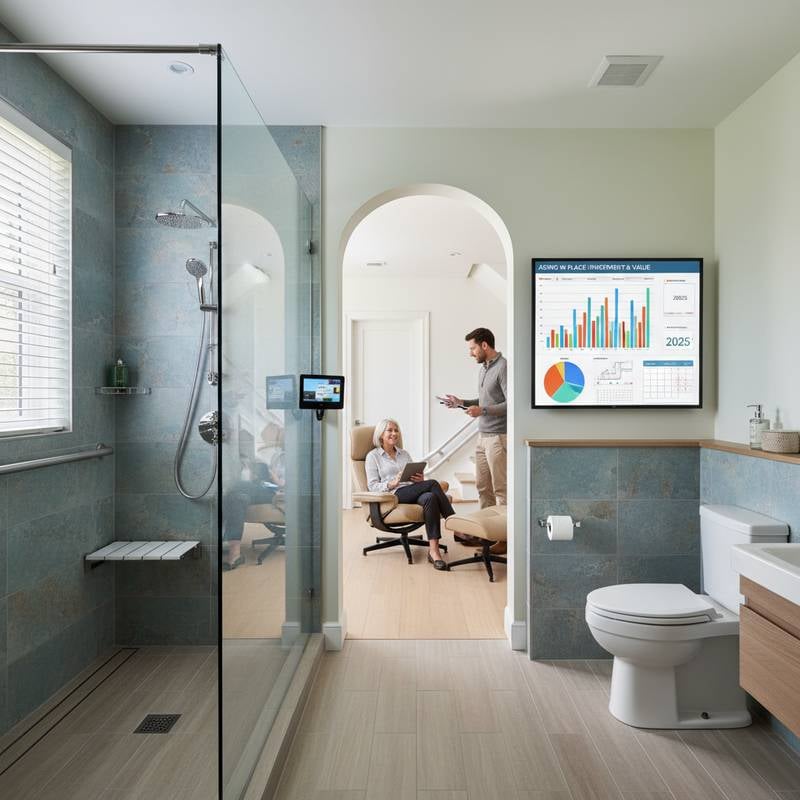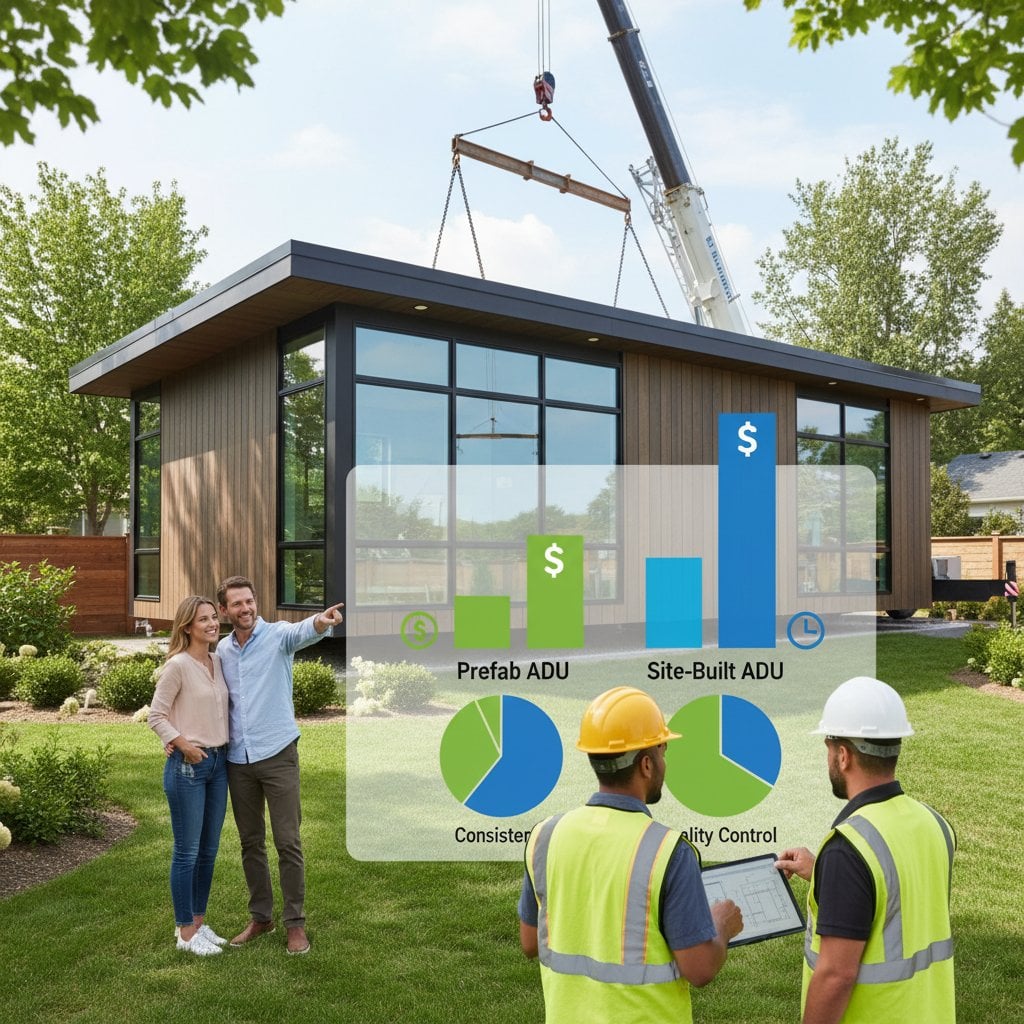Historic Home Renovation Tips for Fall 2025 Success
Restoring a historic home demands a careful balance between preserving its original character and incorporating modern comforts. Fall provides optimal conditions for such projects, including mild temperatures that ease exterior work, greater availability of skilled contractors, and ample time to prepare for winter. Thoughtful planning helps protect architectural features, boost energy efficiency, and elevate property value. This guide presents practical strategies to secure enduring outcomes in your historic renovation.
What This Guide Covers
- Advantages of scheduling renovations in fall for historic properties
- Essential steps to evaluate the property prior to beginning work
- Critical exterior and interior enhancements that uphold preservation while improving daily living
- Standard costs and expected investment returns for typical projects
- Guidance on selecting DIY tasks versus hiring professionals
- Obligations related to safety, permits, and regulatory compliance
- Strategies for routine maintenance to ensure long-term resilience
- Responses to frequent questions, informed by expert insights
Step One: Conduct a Thorough Inspection
A comprehensive inspection forms the foundation of any successful renovation. Historic structures frequently conceal problems like structural weaknesses or water infiltration, which worsen without intervention. Engaging specialists early uncovers these issues and informs a targeted repair plan.
What to Look For
- Foundation and masonry: Inspect for cracks, uneven settling, or signs of water penetration that could undermine the building's integrity.
- Roofing: Assess missing shingles, deteriorated flashing, or sagging ridges that indicate potential leaks.
- Windows and doors: Check wooden elements for rot, frame distortions, or degraded seals that compromise insulation.
- Plumbing and electrical systems: Examine outdated components that fail to meet contemporary safety standards.
- Interior finishes: Review plaster walls, ornamental trim, and authentic flooring for decay or pest activity.
Cost and ROI
Professional inspections typically range from $400 to $800. This upfront expense prevents far costlier repairs by spotting concealed defects in advance. Resolving structural or dampness problems early facilitates seamless progress on subsequent upgrades. Homeowners often recoup the inspection cost via avoided emergency interventions and streamlined project execution.
Interior Renovation Priorities
Interior renovations in historic homes focus on methods that honor historical features while addressing modern needs. Prioritize repairs that maintain authenticity and functionality, ensuring each alteration enhances the home's enduring appeal.
Preserve Plaster Walls and Ceilings
Original plaster delivers superior sound insulation, thermal regulation, and visual charm in historic spaces. Opt for targeted repairs, such as filling cracks with lime-based compounds and securing loose sections, rather than substituting with modern drywall.
- Cost: Budget $200 to $500 per room for plaster restoration, significantly less than the $1,500 or higher for complete overhauls.
- Maintenance Tip: Maintain indoor humidity between 40 and 60 percent to minimize cracking and prolong plaster life.
Upgrade Electrical Safely
Many historic homes feature obsolete knob-and-tube wiring or inadequate panels, posing fire risks and limiting appliance use. A full rewiring modernizes the setup while preserving aesthetic integrity through concealed routing.
- Cost: Rewiring costs $8,000 to $15,000, depending on home size and wiring complexity.
- Pro Guidance: Select licensed electricians with historic preservation experience to minimize disruption to delicate walls and trim.
Improve Insulation Without Compromising Character
Effective insulation reduces energy bills and enhances comfort, but it requires breathable materials to allow moisture vapor to escape and safeguard historic fabrics. Choose options that facilitate air permeability and integrate seamlessly with the architecture.
-
Options:
-
Blown-in cellulose for attics, which occupies gaps without altering structure.
-
Closed-cell spray foam in basements, applied judiciously to combat dampness.
-
Removable insulated panels for walls when full replacement proves unfeasible.
-
Cost: Attic insulation installation runs $1.50 to $3.50 per square foot, influenced by material choice and access.
-
ROI: Energy reductions often offset expenses within three to five years, while increasing the home's market desirability.
Balancing Modern Comfort with Historic Integrity
Effective renovations blend period-specific elements with practical upgrades. This approach safeguards the home's narrative while meeting contemporary requirements.
Kitchen Renovations
Kitchens in historic homes benefit from refreshes that echo original scales and materials, such as period-inspired cabinetry and durable surfaces. Integrate energy-efficient appliances within classic casings to merge form and function.
- Cost: A preservation-minded kitchen renovation spans $35,000 to $70,000, including cabinetry, appliances, and spatial adjustments.
- ROI: Such projects recover 60 to 70 percent of investment upon sale, driven by buyer demand for authentic updates.
- Tip: Sand and seal existing hardwood floors to restore their patina and bypass the need for replacement.
Bathroom Upgrades
Bathroom refreshes incorporate era-evoking details like subway tiles, pedestal basins, and low-flow fixtures that honor the past. These modifications enhance usability without overwhelming the room's historical proportions.
- Cost: Renovations cost $15,000 to $30,000, accounting for plumbing modifications and vapor barriers.
- Pro Insight: Scale modern fixtures, such as vanities and lighting, to align with the space's original dimensions and prevent stylistic conflicts.
Maximizing ROI on Historic Renovations
Historic projects frequently access support via preservation grants, up to 20 percent federal tax credits, or local programs. Consult state historic societies to explore eligibility and reduce outlays. To optimize returns, focus on foundational repairs, employ authentic materials, and maintain detailed records for appraisals and sales. Use verified historical finishes to justify premium pricing.
Safety and Code Compliance
Renovations in historic properties address hazards like lead paint, asbestos, or faulty wiring. Test surfaces before any disturbance and adhere to abatement protocols if hazards appear. Secure permits for structural alterations, particularly in protected districts, and collaborate with preservation-savvy contractors to streamline approvals.
Maintenance and Longevity
Post-renovation care sustains peak condition and averts premature deterioration. Establish seasonal routines aligned with material needs.
- Inspect roofs, gutters, and masonry biannually to catch problems early.
- Repaint exteriors every five to seven years to shield from elemental exposure.
- Arrange yearly HVAC tune-ups to sustain performance.
- Check crawl spaces and foundations periodically for dampness or infestations.
Regular attention transforms a renovated historic home into a lasting asset.
FAQs
What paint colors work best for historic exteriors?
Select subdued shades like pale grays, warm beiges, or hues drawn from era-specific palettes offered by major paint manufacturers.
Can I replace hardwood floors in a historic home?
Refinishing remains the top choice for revitalizing worn areas. In cases of extensive damage, source reclaimed wood matching the original to preserve character without full substitution.
Do historic homes always require custom windows?
Custom units prove unnecessary in many instances; exterior storm windows or interior inserts often enhance efficiency while conserving original frames.
How do I know if my home qualifies for tax credits?
Reach out to your local preservation authority or state historic commission. Qualification hinges on construction era, design style, and inclusion in historic registries.
What is the lifespan of a slate roof on a historic home?
Properly maintained slate endures 75 to 100 years, with routine checks for dislodged tiles and moss extending its viability.
Steps to Launch Your Fall Renovation Project
Fall scheduling prepares historic homes for winter resilience and sustained performance. Initiate with a meticulous assessment to pinpoint priorities, then execute repairs that fortify structure and efficiency. Engage specialists for intricate work, leverage available incentives, and commit to ongoing upkeep. This methodical process preserves your home's legacy while delivering enhanced livability for years ahead.









